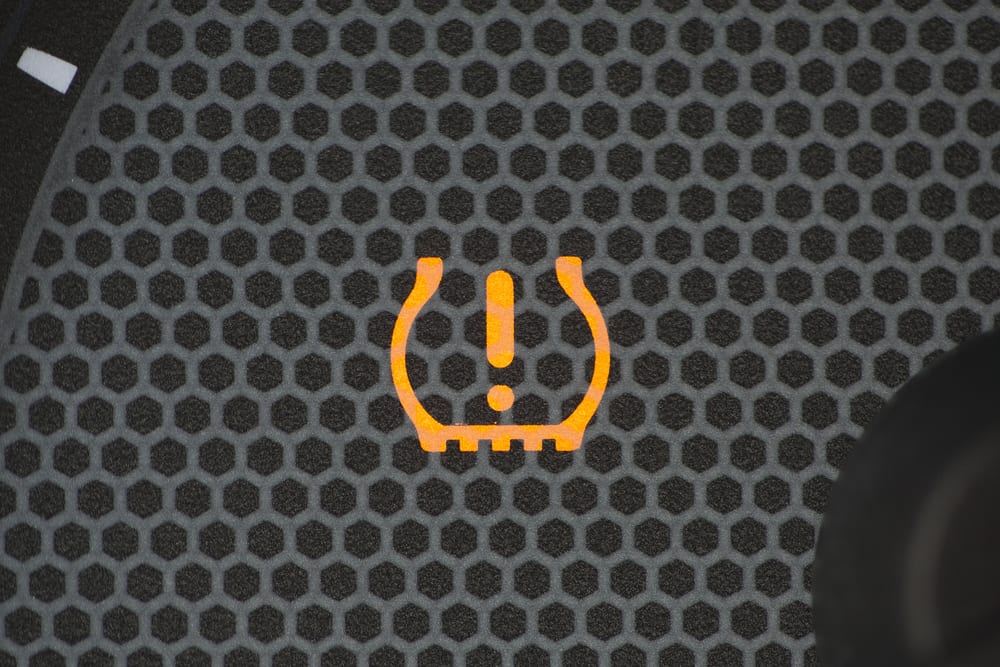

The Tire Pressure Monitoring System (TPMS) alerts you when the tire pressure is too low by turning on a dashboard warning light. Proper tire inflation is crucial to tire performance, car handling, and carrying ability. A tire inflated to the correct amount will reduce tread movement for longer tire life, roll easier for optimal fuel efficiency, and increase water dispersion to prevent cases of hydroplaning. Low pressure and high pressure in tires can cause unsafe driving conditions.
Low tire pressure can cause the tires to wear prematurely, and lead to tire failure. An underinflated tire will turn sluggishly, negatively impact fuel economy, and build up extra heat. High tire pressure, or overinflated tires, will cause early wear in the center of the tread, poor traction, and won’t be able to properly absorb road impact. If the tire fails from any of these conditions, it could lead to a blowout that causes you to potentially lose control of the vehicle.
What To Do When the TPMS Light Turns On
As soon as the TPMS Light comes on, check the tire pressure in all four of your tires. If one of the tires has low air, add air until the pressure reaches the manufacturer’s specifications, which can be found on the inside of the driver's side door panel. In addition, the TPMS Light may come on if the tire pressure is too high. If this is the case, check the pressure of all four tires and deflate as needed.
The TPMS light may illuminate in any of the following 3 ways:
TPMS light turns on while driving:If the TPMS Light comes on while you are driving, at least one of your tires has incorrect air pressure. Find the nearest gas station and check the pressure of the tires. Driving too long on underinflated tires can cause the tires undue wear, reduce gas mileage, and present safety hazards.
TPMS flashes on and off: Sometimes the TPMS Light goes on and off, which can be due to fluctuating temperatures. If the pressure drops overnight, then increases during the day, the light may turn off once the vehicle warms up or once the temperature rises during the day. If the light comes back on once the temperature cools down, you will know the weather is causing the pressure in the tires to fluctuate. It is a good idea to check the tires with a gauge and add or take away any air as needed.
TPMS light flashes on and off, then stays on: If the TPMS Light flashes for 1 to 1.5 minutes after you start your car, then remains on, this means the system is not functioning correctly. A mechanic should look at your vehicle as soon as possible. If you do need to drive, be careful as the TPMS system will no longer alert you of low tire pressure. If you need to drive before a mechanic can look at your car, inspect your tires with a gauge and add pressure as needed.
Is it Safe to Drive with the TPMS Light on?
No, driving with the TPMS Light on is not safe. It means one of your tires is underinflated or overinflated. You can find the proper tire pressure for your car in your owner’s manual, or on a sticker located on the door, trunk, or fuel door. This can cause undue wear on the tire, potentially lead to a tire failure, and cause a blowout dangerous to you and other drivers on the road. Be sure to refer to your owner’s manual for specific instructions for monitoring your TPMS system, as manufacturers may set their TPMS lights to trigger differently.



